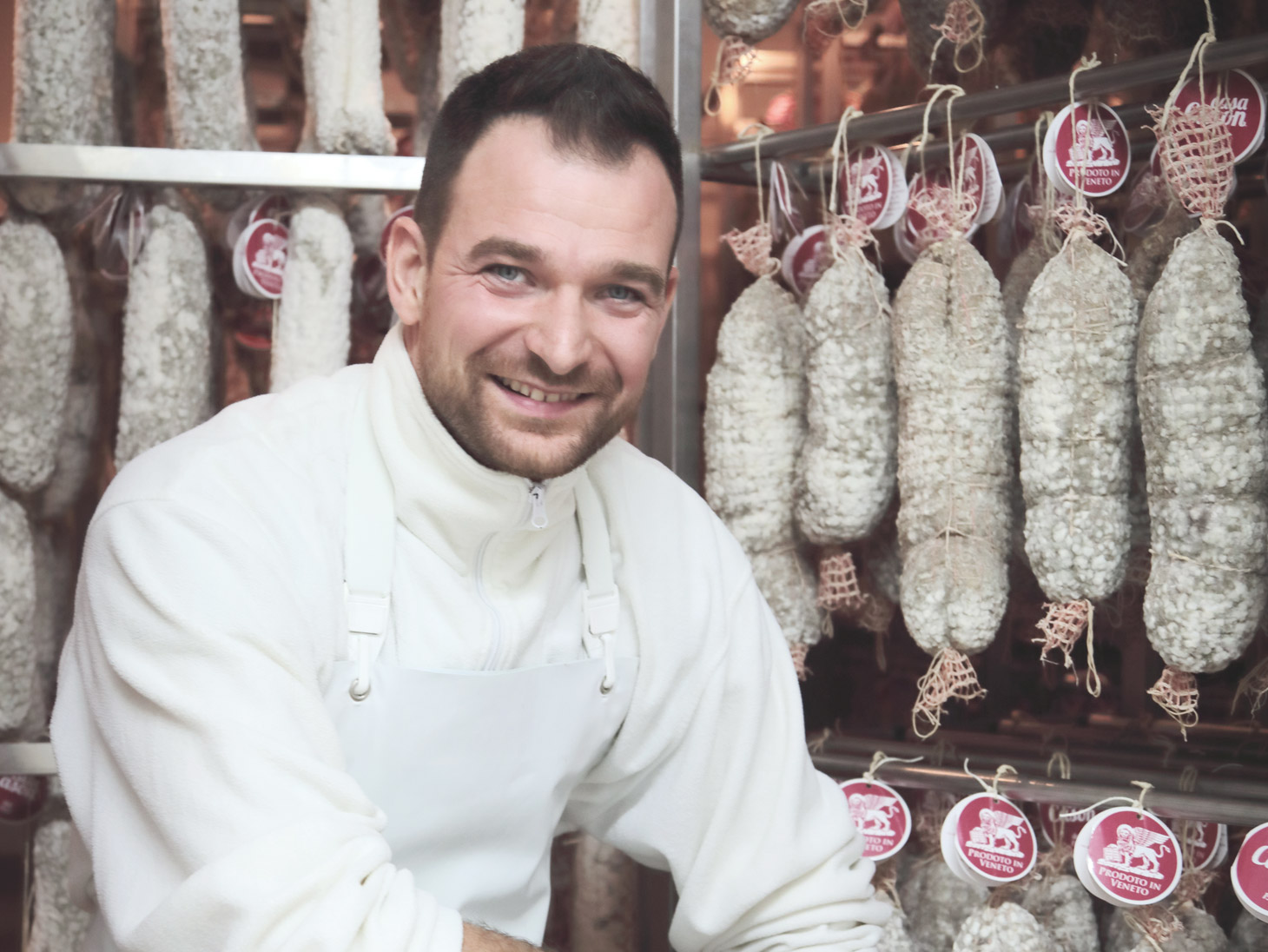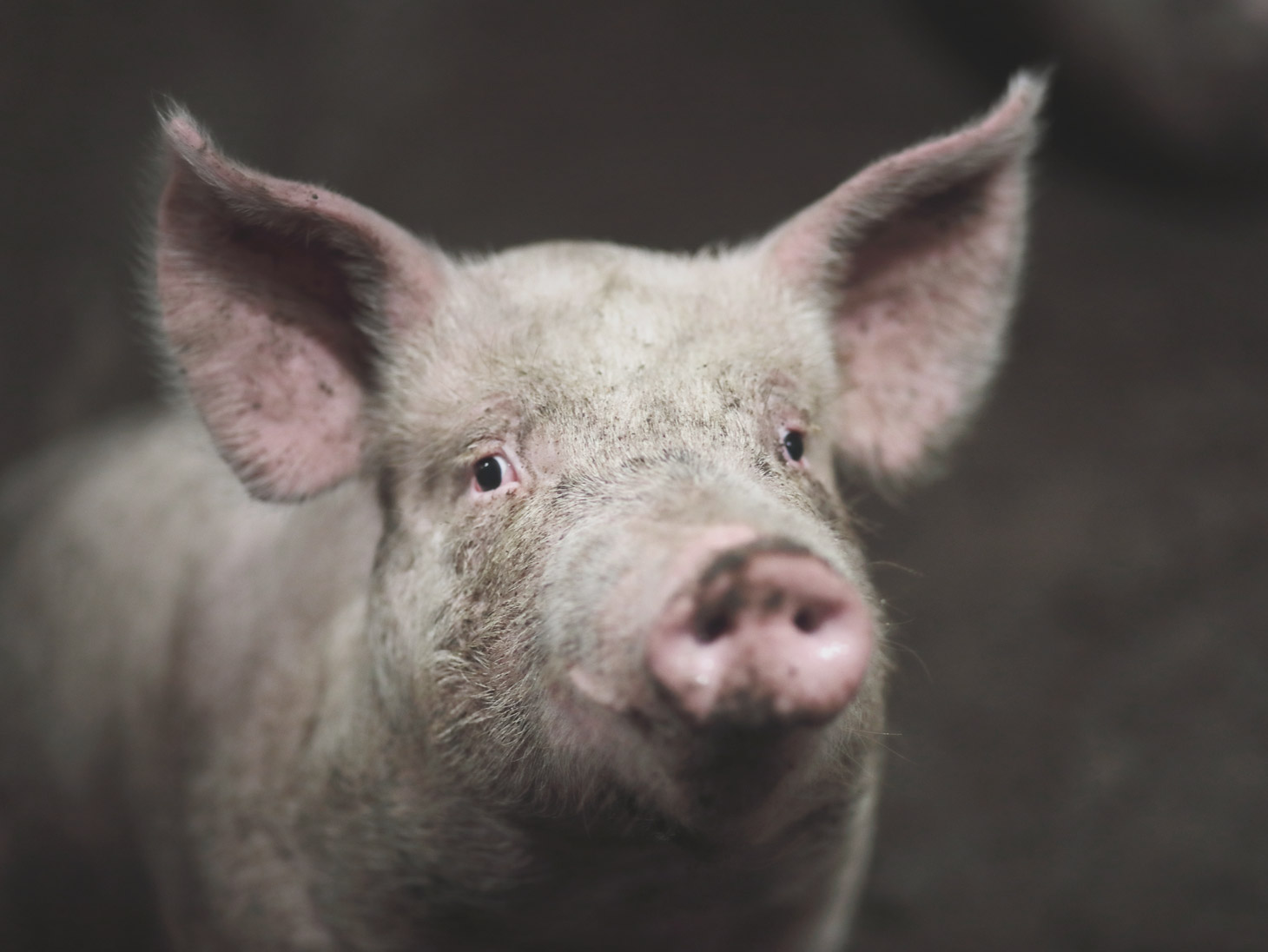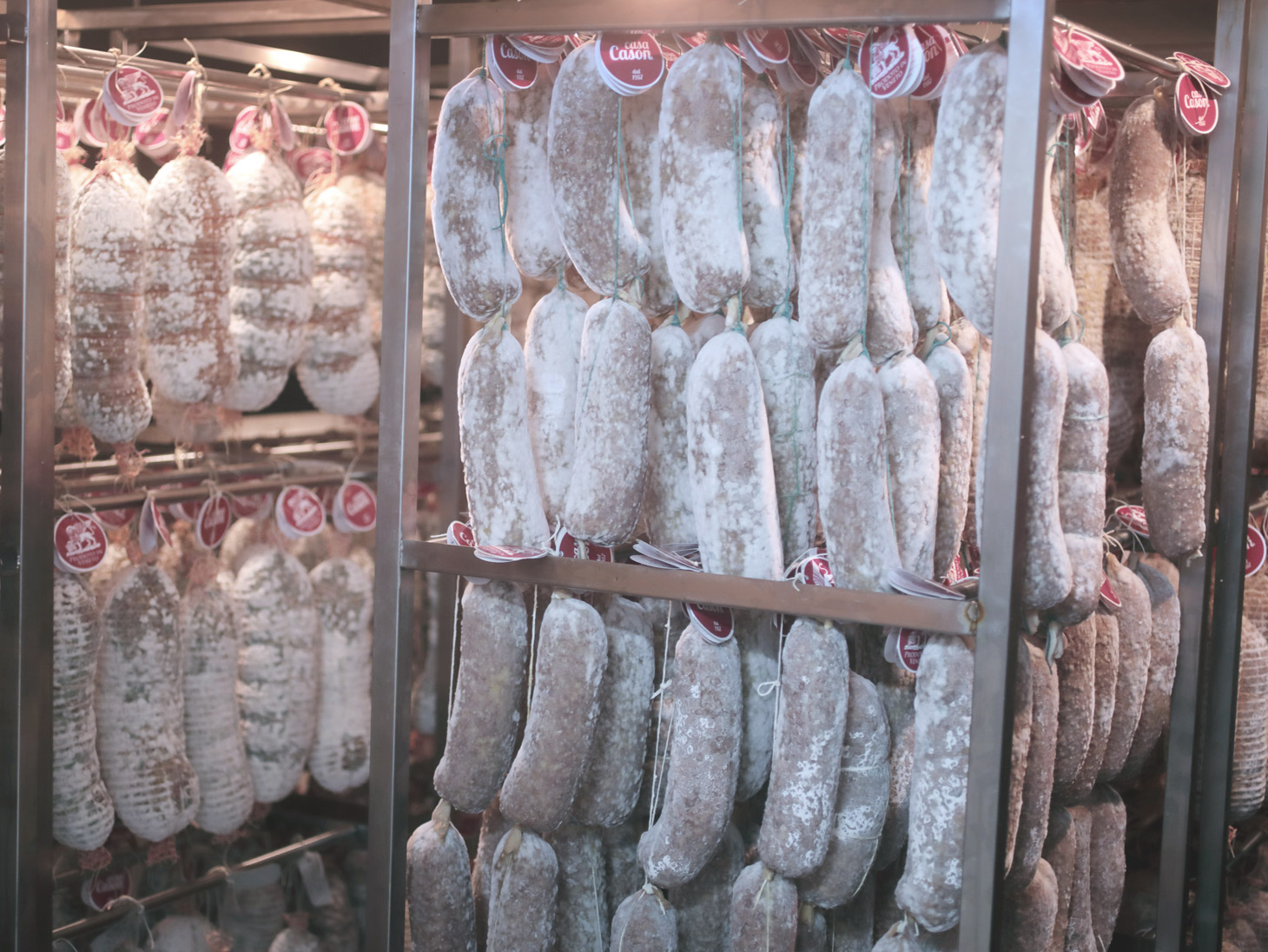
It’s a grey monday morning, full autumn. I went through the notes I’ve taken during the interview with Paolo of Casa Cason, trying to organize my thoughts. I googled to find some informations about the Venetian slaughtering tradition and suddenly it rised to my mind a memory of myself as a kid, in Vergoman neighbourhood, in Miane, the village where I originate from, 30 km north of Treviso. I remember I was assisting, horrified and fascinated at once, at the art of pork slaughtering: the main table, the mincer, the big pots where bones where boiled - it’s well known in fact that nothing from a pork produce a waste. Men were doing all around deboning, mincing, casing, kids were playing in the courtyard, whilst women were preparing dinner for everybody.
Now the frames I kept from the visit to Casa Cason are the opposite to my kid’s memories: an immaculate laboratory where everything is perfectly tidy up - you get immediately how much Paolo cares about hygienic standards.
The production site is located in a old farmhouse at San Pietro in Gù (province of Padova), a town lost in the countryside between Vicenza and Padova. Next to the laboratory there is the shed where pigs are raised. Approaching animal’site I’m quite surprised not to sniff any pig smell. “We use perphosfate to reduce smell pollution, a fertilizer that links with ammonia and help the soil adsorbing the manure“.
“Our family breeds pigs since 1957. At the beginning all the animals were addressed to an external slaughterhouse, but my grandfather Giacomo sometime took the liberty to work one at home, according to his expertise and tradition fundamentals. That was just for the pleasure of the art and for gifting some salami or soppresse to relatives and friends. Presents were so much appreciated that the family started thinking about a charcuterie business. Today we have approximately 500 pigs: 60% of them goes for our charcuterie production and the rest goes to a slaughterhouse. We follow the breeding rules of Parma and San Daniele prosciutto production, respecting also a regional legislation for animal wellbeing. We have not an intensive harvesting method, animals have a proper space to move and are fed with a variable mix of grains, depending on their growth stage: corn, bran, barley and mineral salt as integration. Pigs arrive in our farm at 3 months age and we bring them at 12 months approximately.”

Feeding and growth control is crucial: short production chain, quality of ingredients, high hygenic standards are the key factors that permit to produce charcuterie without additives, guaranteeing at the same time food safety. Today Paolo still produces following his grandfather Giacomo’s recipe: salt, pepper, natural gut only and traditional drying and aging processes. No preservatives are used at all.
“When they reach a weight of 220 kg, at the age of about 12 months, pigs are conducted at a small slaughterhouse that give us back the halves, then we take care of deboning and production. It’s very important processing the meat only two hours later than the slaughtering process.”
Working a “warm” meat results in a more homogeneous and compact texture. Salami and sopresse are then cased in natural gut, adding just a bit of twine or a net. The drying step lasts 5 or 6 days and happens in a room where a machine imitates the stove of the old times, producing dry and hot air during the day and cold and humid air at night. Aging room recreates the context of a canteen: cold walls, stable temperature and ventilation to ricycle air and contrast moulds growth. It lasts on average 60 days for a salame and 5 months for sopressa, but it depends on the size of the product, that is never standard since Paolo uses a natural gut.
Paolo’s approach to tradition is maniacal and this care becomes clear once we try his products. Many people said it’s like having a piece of charcuterie of the old days. We also have to treat the cold cuts as in the past, keeping the product far from light and warm fonts, accepting the natural oxidation of the exposed slice and remembering it is preservative free.
If we understand the value of preservative-free charcuterie means, we need to accept the oxidation “inconvenient”, that gives a brownish colour to the slice. So we certain have to renounce at a certain comfort level and at the reddish slice colour industrial productions got us used to, but the gain would be priceless.

Martina Iseppon
Marketing Director



